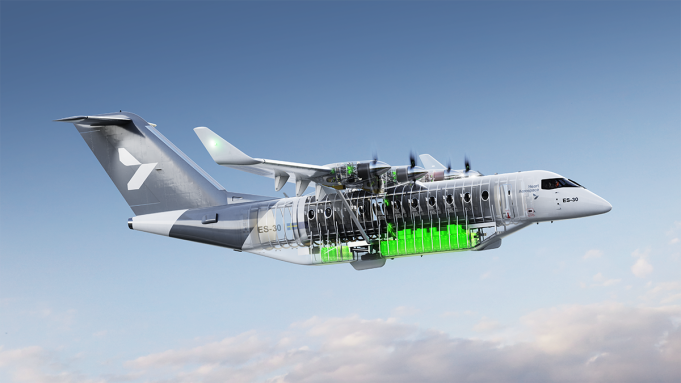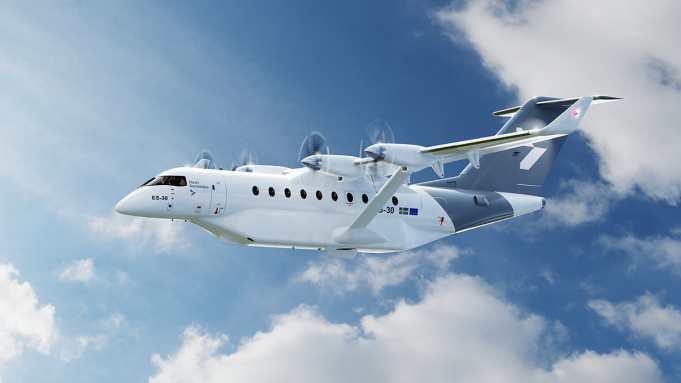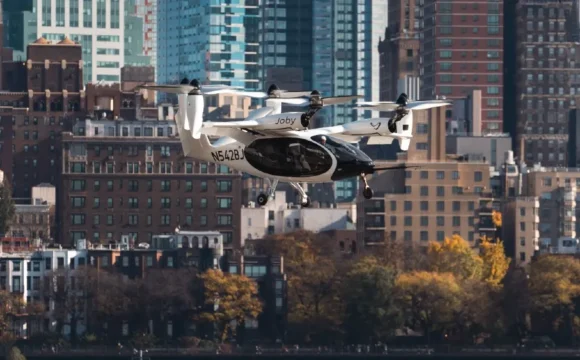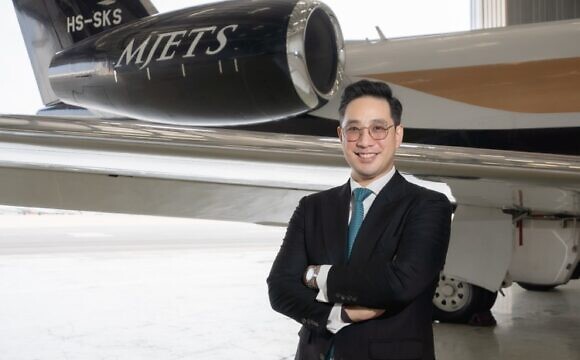Heart Aerospace เตรียมพร้อมทะยานฟ้า
บริษัทสัญชาติสวีเดนแห่งนี้กำลังจะเปิดตัวเครื่องบินไฮบริด-ไฟฟ้าในปี 2028 หลังจากประสบความสำเร็จในหลายขั้นตอนสำคัญในช่วงไม่กี่เดือนที่ผ่านมา
เปิดตัวครั้งแรกในปี 2022 ES-30 ได้รับการออกแบบมาเพื่อทำให้การเดินทางในภูมิภาคที่สะอาดขึ้นและมีประสิทธิภาพมากขึ้น เครื่องบินไฮบริดสามารถใช้พลังงานจากแบตเตอรี่ลิเธียมไอออนหรือเชื้อเพลิงการบินอย่างยั่งยืน (SAF) ซึ่งหมายความว่าจะปล่อยมลภาวะน้อยกว่าเครื่องบินแบบดั้งเดิม นอกจากนี้ Heart ยังระบุว่าจะมีต้นทุนการดำเนินงานที่ต่ำกว่าคู่แข่งแบบเดิม
ES-30 ใช้พลังงานจากมอเตอร์ไฟฟ้าสี่ตัว สามารถบินได้ 124 ไมล์ในโหมดไฟฟ้าที่ไม่มีการปล่อยมลภาวะ หรือ 249 ไมล์ในโหมดไฮบริดด้วยความช่วยเหลือของเทอร์โบเจเนเรเตอร์สองตัว ES-30 จะเงียบกว่าเครื่องบินที่ใช้เครื่องยนต์สันดาป และสามารถบินขึ้นได้จากรันเวย์สั้นเพียง 3,609 ฟุต
ES-30 จะมีสิ่งอำนวยความสะดวกครบครัน ห้องโดยสารกว้างขวางสามารถรองรับผู้โดยสารได้ 30 คน (หากลดจำนวนผู้โดยสารเหลือ 25 คน ระยะทางในการบินแบบไฮบริดจะเพิ่มขึ้นเป็น 497 ไมล์) ภายในห้องโดยสารยังมีห้องครัว ห้องน้ำ และช่องเก็บสัมภาระเหนือศีรษะขนาดใหญ่
Heart Aerospace มีแผนการดำเนินงานที่รวดเร็วแต่มีความคืบหน้าอย่างมั่นคง บริษัทได้เปิดศูนย์วิจัยและพัฒนาแห่งใหม่ในสหรัฐอเมริกาเมื่อเดือนพฤษภาคมที่ผ่านมา เพื่อเร่งการพัฒนา ES-30 ทีมงานวางแผนที่จะทดสอบระบบขับเคลื่อนบนเครื่องบินต้นแบบขนาดเต็ม และแสดงให้เห็นถึงการบินด้วยพลังงานไฟฟ้าแบบเต็มรูปแบบในปี 2568 จากนั้นจะดำเนินการขอใบรับรองประเภทในปี 2571
Heart Aerospace ยังได้ระดมทุนเพื่อพัฒนาผลิตภัณฑ์ไปแล้ว 145 ล้านดอลลาร์สหรัฐฯ จากผู้เล่นในอุตสาหกรรมรายใหญ่ เช่น United Airlines, Air Canada และ Saab
“Heart Aerospace กำลังเข้าสู่ช่วงทดสอบฮาร์ดแวร์ที่น่าตื่นเต้น และเรามีเป้าหมายที่จะนำเครื่องบินโดยสารไฮบริด-ไฟฟ้าออกสู่ตลาดภายในสิ้นทศวรรษนี้” Anders Forslund ซีอีโอและผู้ร่วมก่อตั้งกล่าว “เมื่อเราใกล้ถึงเป้าหมายนี้มากขึ้น การร่วมมือกับสนามบิน ผู้ประกอบการ และหน่วยงานท้องถิ่นมีความสำคัญอย่างยิ่งในการสร้างระบบนิเวศน์ที่จำเป็นเพื่อสนับสนุนการบินไฟฟ้า"
Heart ได้รับคำสั่งซื้อ ES-30 แล้ว 250 เครื่อง พร้อมสิทธิ์ซื้อเพิ่มอีก 120 เครื่อง นอกจากนี้ยังได้รับจดหมายแสดงเจตนาสำหรับเครื่องบินอีก 191 ลำ
จากบทความโดย Rachel Cormack

Heart Aerospace is almost ready for takeoff.
The Swedish outfit is set to launch its hybrid-electric airplane in 2028, after reaching significant milestones in the past few months.
First unveiled in 2022, the ES-30 is designed to make regional travel cleaner and more efficient. The hybrid can run on lithium-ion batteries or sustainable aviation fuel (SAF), meaning it will produce fewer emissions than traditional aircraft. It will also be cheaper to operate than conventional competitors, according to Heart.
Powered by four electric motors, the ES-30 can fly 124 miles in emissions-free “electric mode" or 249 miles in “hybrid mode" with the help of two turbo generators. The ES-30 will also be quieter than gas-powered craft and can take off from runways as short as 3,609 feet.
The ES-30 will offer all the usual creature comforts. The spacious cabin features three-abreast seating for up to 30 fliers. (Having 25 passengers increases the hybrid range to 497 miles.) The interior also features a galley, a lavatory, and large overhead bins.
Heart has an aggressive timeline but is making solid progress. The company opened a new research and development hub in the United States in May to speed up the development of the ES-30. The team plans to test the propulsion system on a full-scale demonstrator and showcase fully electric flight in 2025. It will then pursue type certification in 2028.
Heart has raised $145 million in development funding from industry players like United Airlines, Air Canada, and Saab.
“Heart Aerospace has just entered an exciting new phase of hardware testing, and our aim is to have a hybrid-electric passenger plane on the market before the end of this decade," CEO and cofounder Anders Forslund said. “As we get closer to this goal, collaborations with airports, operators, and regional authorities are crucial to ensure the ecosystem needed to support electric aviation."
Heart has secured 250 orders for the ES-30, with purchase rights for another 120 planes. It has also received letters of intent for a further 191 aircraft.
From the article by Rachel Cormack

Heart Aerospace








